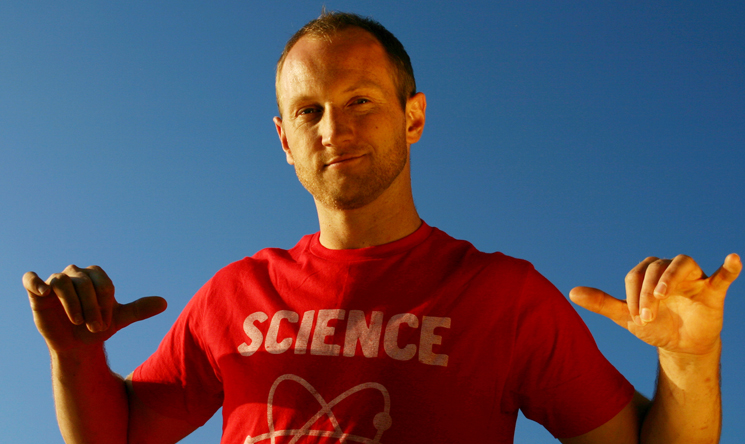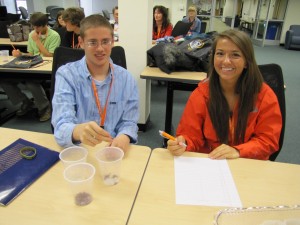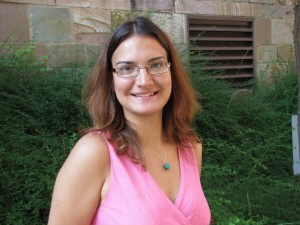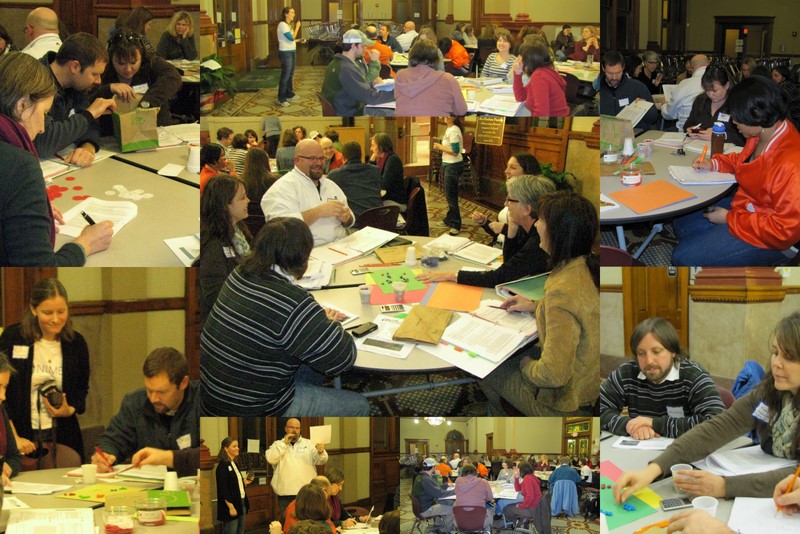
Suzanne Lenhart (right) presents the senior division awards to Oak Ridge High School seniors Ashley Parks (left) and Samiha Ahsan (center) at the Southern Appalachian Science & Engineering Fair
NIMBioS sponsored two awards for biological research projects using mathematical methods at this year’s Southern Appalachian Science & Engineering Fair. Samiha Ahsan and Ashley Parks, both of Oak Ridge High School, share the senior level prize for their project “Mathematical Modeling of the Diffusion of Cells Through Arterial Walls.” Ahsan became interested in the project because of her interest in life science, and Parks because of her interest in mathematics.
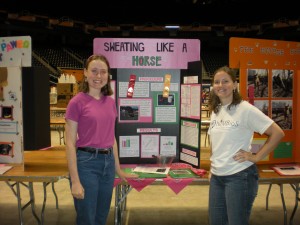
Lily Turski (left), junior level prize winner, poses with her project "Sweating Like a Horse" and Kelly Sturner
The junior level prize went to Lily Turaski of the Blount Home Education Association for her project “Sweating Like a Horse”, where she explored her question of whether horses of darker colors sweated more in the sun to control their body temperature. Turaski demonstrated an advanced understanding of the statistics she used to determine whether her hypothesis was validated.
The prizes included $50 (senior level) or $25 (junior level) plus a certificate and official letter explaining the award. Suzanne Lenhart, NIMBioS Associate Director for Education, Outreach & Diversity and Kelly Sturner, NIMBioS Education & Outreach Coordinator presented the awards at the ceremony last week.
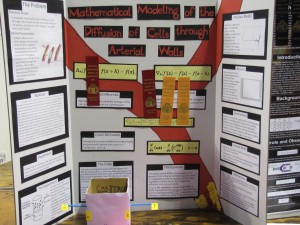
The senior prize-wining project, "Mathematical Modeling of the Diffusion of Cells through Arterial Walls"
Yuzhuo Chu and Ashutosh Wadhwa, NIMBioS Graduate Assistants, helped with the judging.



